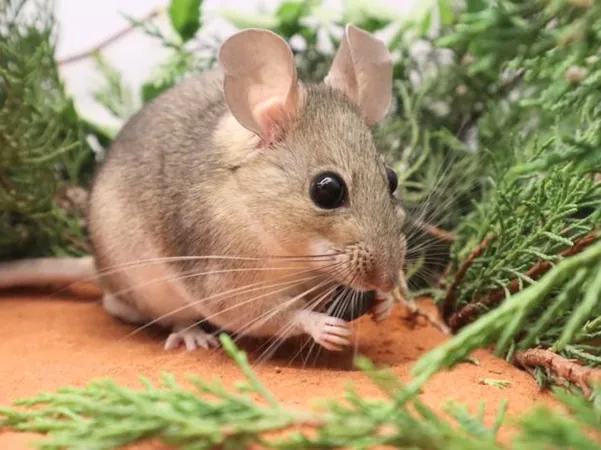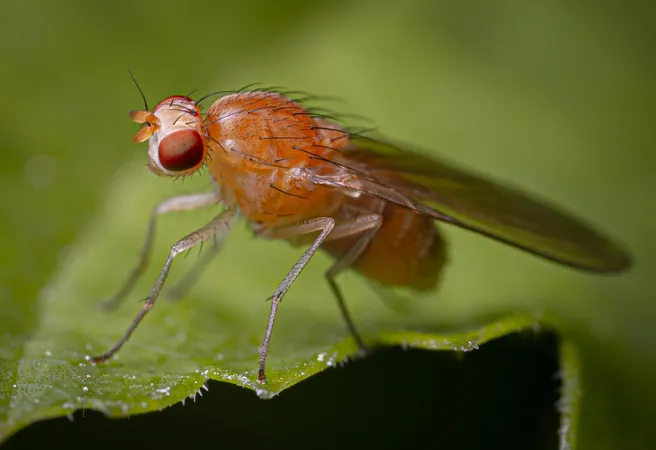
How Woodrats Outsmart Toxic Plants: A Survival Tale
2025-09-16
Author: Wei
Nature's Battle: Herbivores vs. Toxic Plants
In the wild, plants aren't just passive participants; they actively defend themselves by producing chemicals designed to deter herbivores. For plant-eating animals, the quest for sustenance becomes a delicate dance of avoiding toxins while ensuring adequate nutrition. This balancing act is not just about surviving today; it shapes the evolution of species for generations.
The Woodrat: A Toxic Diet Pioneer
Enter the woodrat—an unlikely hero in the realm of herbivores. These North American rodents have an astonishing ability to munch on some of nature's most toxic vegetation. As ecologist Sara Weinstein from Utah State University notes, "Woodrats can feast on plants like creosote bush, mesquite, and juniper, which are packed with nasty compounds. If they have no other options, they’ll still go for it!"
Decoding Woodrat Dining Habits
Weinstein, alongside a team from various universities, recently unveiled the findings of an extensive eight-year study observing woodrat populations across North America. With wooden habitats filled with diverse plant life, woodrats serve as a brilliant model for studying dietary choices among wild animals.
Unlike their notorious urban relatives—think New York's pizza rat—woodrats prefer solitude in undeveloped areas. Yet, their widespread presence across the U.S. makes them ideal subjects for research. "Compared to larger herbivores like deer or elephants, woodrats are much simpler to study," Weinstein points out. Their droppings—rich in nutritional data—offer a window into their daily diets.
Revolutionizing Dietary Research
Thanks to advancements in DNA metabarcoding, researchers can now delve deeper into the unseen dining habits of these creatures. Weinstein describes this cutting-edge technique as "powerful and accessible for revealing crucial dietary patterns." However, while we’ve made strides in understanding herbivore diets, the broader ecological implications remain fuzzy.
The Tightrope of Diet Specialization
A long-held belief is that dietary specialization comes with risks. If a species relies heavily on a single plant and that resource disappears due to ecological shifts, trouble lies ahead. On the flip side, generalists can adapt by altering their diets more easily. However, the reality is intricate; while many woodrat populations are generalists, individual choices tend to be more specific than we previously realized.
Weinstein explains, "Generalists aren't just jack-of-all-trades. They often excel in certain areas, allowing them to thrive despite the variety around them." This insight shows how woodrats navigate their dietary labyrinth and manage the risks posed by toxic compounds.
Implications Beyond Woodrats
The significance of these findings stretches far beyond woodrats themselves. Understanding how these creatures select their diets can reshape our views on food webs and species interactions. It also sheds light on which populations are more likely to endure in the face of environmental changes.
Ultimately, the survival strategies of woodrats reveal vital lessons about resilience in our changing world. In studying their secrets, scientists are unlocking big truths about the intricate relationships within ecosystems. This research is not just a tale of small rodents; it's a reminder that even the tiniest creatures can teach us monumental truths about survival.
Published in the esteemed journal Proceedings of the National Academy of Sciences, this study marks a significant leap in our understanding of herbivores in the wild.



 Brasil (PT)
Brasil (PT)
 Canada (EN)
Canada (EN)
 Chile (ES)
Chile (ES)
 Česko (CS)
Česko (CS)
 대한민국 (KO)
대한민국 (KO)
 España (ES)
España (ES)
 France (FR)
France (FR)
 Hong Kong (EN)
Hong Kong (EN)
 Italia (IT)
Italia (IT)
 日本 (JA)
日本 (JA)
 Magyarország (HU)
Magyarország (HU)
 Norge (NO)
Norge (NO)
 Polska (PL)
Polska (PL)
 Schweiz (DE)
Schweiz (DE)
 Singapore (EN)
Singapore (EN)
 Sverige (SV)
Sverige (SV)
 Suomi (FI)
Suomi (FI)
 Türkiye (TR)
Türkiye (TR)
 الإمارات العربية المتحدة (AR)
الإمارات العربية المتحدة (AR)